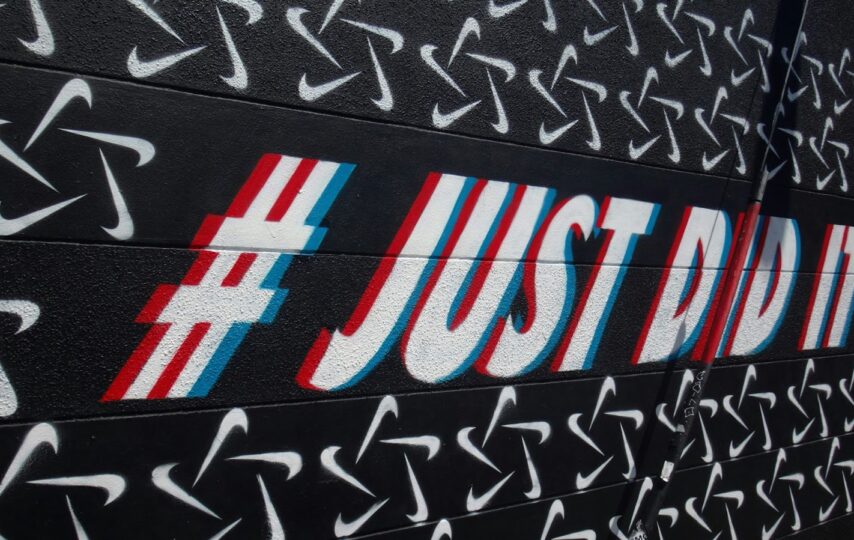Ever feel like you’re flying when you run? Well, the right pair of shoes can make that happen! Running shoes aren’t just about looking cool; they’re like your trusty sidekicks on the track.
Picture this:
Protection, support, and shock absorption; all the good stuff that lets you focus on nailing your running goals. But if you end up picking the wrong pair, it can turn into a painful journey.
Finding your perfect running match isn’t a walk in the park.
Picking the perfect style among all the options out there can be a bit of a head-scratcher, right? But no stress! We’ve got your back with all the info you need in this article. So, chill and read on! So, without any further ado, let’s begin.
1: Focus on Comfort Over Anything Else
Nike is the ideal running shoe, which can make your feet feel like you are walking on the clouds. However, figuring out if they’ll stay comfortable during longer runs isn’t a piece of cake.
Hence, when you’re checking for comfort, focus on how the shoes feel on different parts of your foot. Let’s get to know more about it.
A: Upper and the Toe Box
Okay, so the upper part of a shoe is like the top area above the sole. When you’re picking one, find something that fits your foot nicely without any rubbing or pulling.
The Nike Flyknit can be a cool option in this regard, as it’s both lightweight and can also reduce waste by almost 60%. So, it’s a great pair for anyone looking for ultimate comfort.
B: Saddle and Midsole
Think of the saddle as the part where the laces hang out. It’s like the comfy spot that keeps your foot snug but not too squeeze-y around the arch when you’re on the move.
Look for a midsole that soaks up impact without weighing your shoe down. Go for one that feels comfy, not too squishy or too hard; find the Goldilocks of midsoles that’s just right for you!
C: Outsole and Heel Drop
Think of the bottom of your shoe as the tough guy in the shoe family; that’s the outsole. When you’re picking out shoes, find a sole that fits your foot shape and feels sturdy. Check the tread too, make sure it suits where you like to run; not too stiff or heavy. It’s like finding the perfect balance between tough and flexible for your feet! Think of the heel counter as the back part of your shoe that links the upper (the top part) to the lining. How high your heel is compared to the ball of your foot can affect how you walk or run. Pay close attention to how comfortable your shoes are when you move, and steer clear of ones that make certain parts of your foot feel strained.
2: Lower Your Risks of Injuries
When you’re on the hunt for the perfect running shoes, one big thing to consider is dodging injuries. The way your shoes are designed and the materials they’re made of can make or break whether your run feels like a dream or a disaster. In the old days, folks believed motion control shoes were the superhero against pronation, that natural inward foot motion when you take a step. But surprise, surprise; it didn’t really cut down on running injuries. Nike’s brainiacs at the Sports Research Lab did some digging with real runners and found a nifty solution: forget about hardcore control, just focus on cushioning and comfort.
Turns out, that’s the secret sauce to keep injuries at bay. Now, here’s the thing; more cushioning usually means a chunkier, foam-packed shoe. But hold up, the NSRL wizards cooked up a cool rocker shape for a smooth ride from heel to toe. They also made the toe and heel wider for extra stability. To up your game and dodge injuries, snag a pair that feels comfy and cushiony. Mix that with a running routine that fits your style and goals, and you’re golden!
3: Some Quick Pointers
When you’re looking for new running shoes, think about how far you usually run and the place you’re running. It makes a difference. Apart from this, you should also focus on the following:
- Make sure to know your exact size; don’t just assume all shoes will fit the same. Use a size chart and measure your feet for the perfect fit. If you’re stuck between sizes, go for a half-size up; it’s safer that way.
- Shop in the evening when your feet might be a bit swollen from the day. That way, you’ll find shoes that still feel good even after a full day.
- Wear the running socks you plan to use during your jogs when trying on shoes. This ensures you get a fit that works when you’re out running.
- Take those shoes for a little test jog before deciding. Some stores, like Nike, even let you jog around to feel how they perform. If you’re still unsure, consider trying out a couple of pairs and returning the ones that don’t make the cut.
- While style is cool, focus on fit and comfort first. Once you’ve got the comfy ones, then you can pick the coolest-looking pair.
The Bottom Line
When you’re buying shoes online, always check the brand’s size chart and measure your feet. If you’re hitting the stores, try on a couple of sizes until you discover the one that feels just right.
Make sure they’re snug around the middle and heel but give your toes some breathing space. And if your feet aren’t twins, go for the size that fits the bigger foot.
That’s not all. Let’s talk about how many pairs of shoes you need as well.
Imagine your running shoes as your trusty sidekicks on the jogging journey. While having one pair is cool, having a shoe squad can be even cooler. It’s like having options for your feet!
Think about it; doing the same moves over and over might lead to some sneaky injuries. But if you switch between shoes, it’s like giving your feet a little vacation from monotony.
Plus, if you’re the adventurous type who runs on all sorts of surfaces, having a couple of pairs is like having the right tool for the job.
Some folks even have a speedy pair for racing; you know, when you want to feel like a gazelle, and a sturdier one for the everyday hustle. It’s like having a shoe for every mood, terrain, and pace. So, why settle for one when you can have a whole shoe collection cheering you on?







